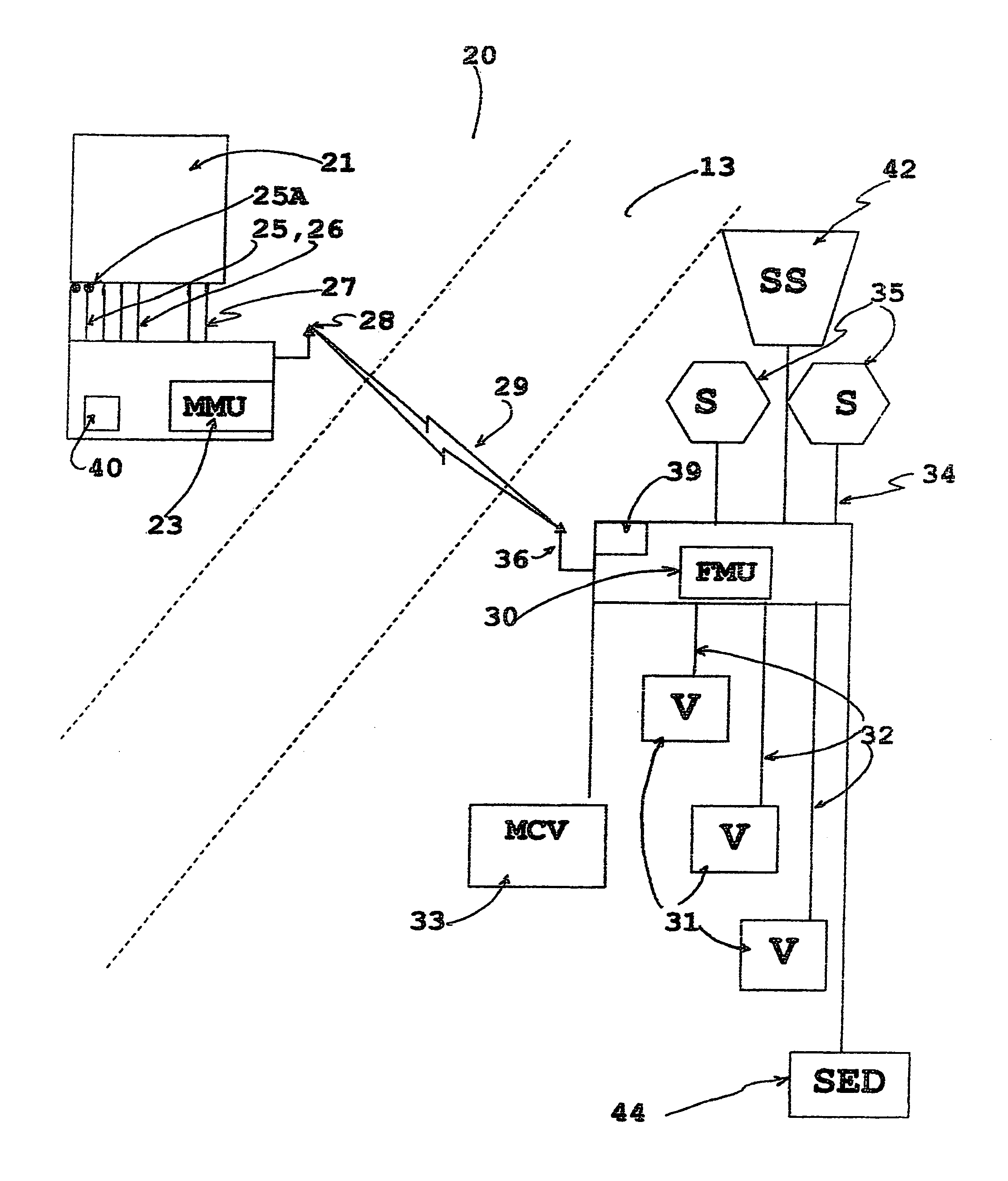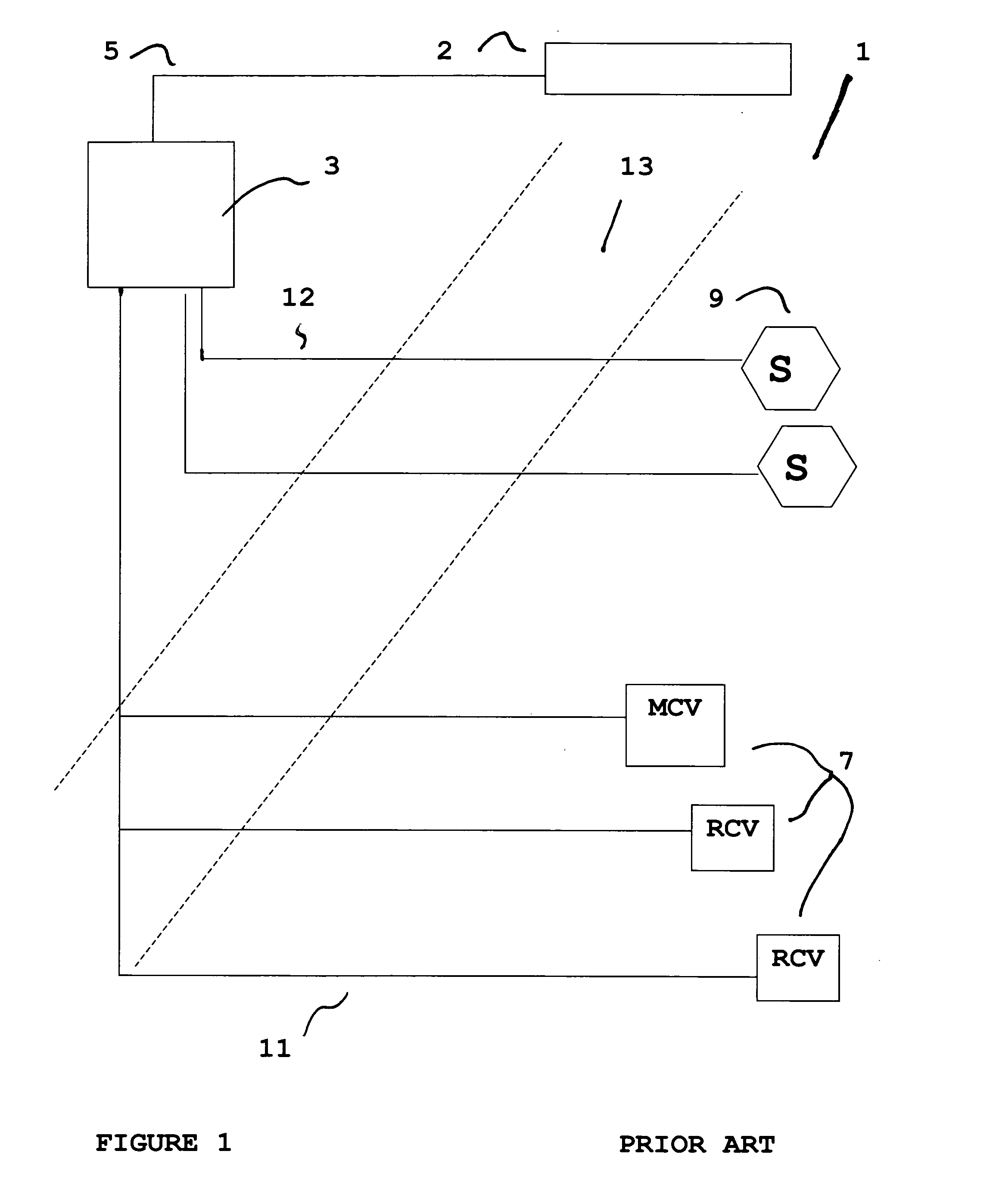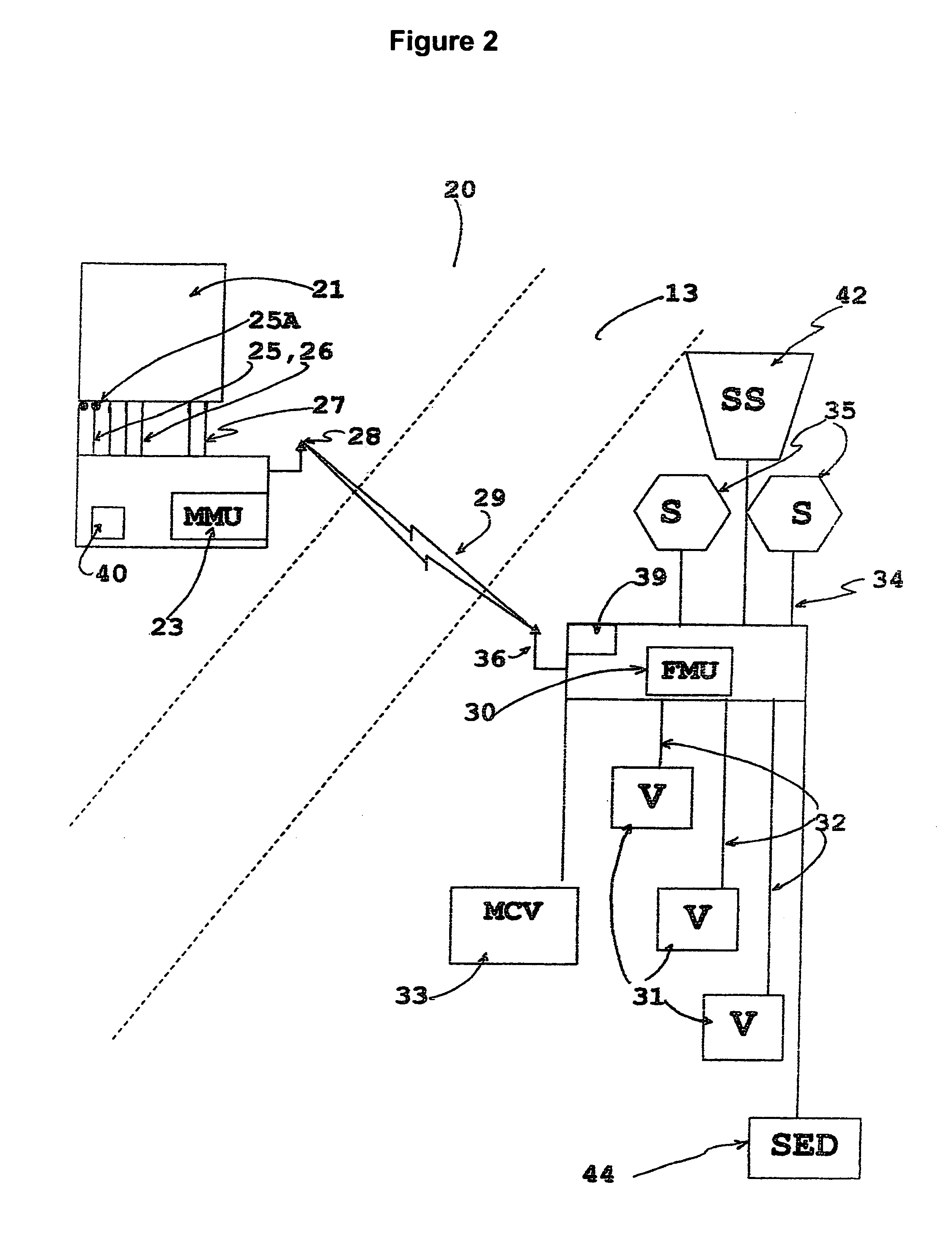Wireless sensor and control transmitter system
a transmitter system and sensor technology, applied in the field of water or fluid control systems, can solve the problems of requiring a greater number of control units, knowing that the valve is not operating properly, and requiring additional controller units, so as to improve the control of the system and save resources
- Summary
- Abstract
- Description
- Claims
- Application Information
AI Technical Summary
Benefits of technology
Problems solved by technology
Method used
Image
Examples
Embodiment Construction
[0034]The following description, and the figures to which it refers, are provided for the purpose of describing examples and specific embodiments of the invention only and are not intended to exhaustively describe all possible examples and embodiments of the invention. Many specific implementations of the following described WSCXS will be apparent to those of skill in the art.
[0035]FIG. 1 shows a typical solid-state centralized irrigation system 1 of the prior art. A central base personal computer 2 is connected via a communications link 5, to a solid-state controller unit 3. The controller unit 3 is connected to one or more field MCV, RCV or other relay type devices 7, and / or to field sensors 9, such as flow, soil moisture, and atmospheric or other devices by hardwires 11 and 12. The hardwired connections between the controller unit 3 and the other components 5, 7 and 9 frequently run under roads 13 (shown in dashed lines) or other structure.
[0036]Referring now to FIG. 2, a diagram...
PUM
 Login to View More
Login to View More Abstract
Description
Claims
Application Information
 Login to View More
Login to View More - R&D
- Intellectual Property
- Life Sciences
- Materials
- Tech Scout
- Unparalleled Data Quality
- Higher Quality Content
- 60% Fewer Hallucinations
Browse by: Latest US Patents, China's latest patents, Technical Efficacy Thesaurus, Application Domain, Technology Topic, Popular Technical Reports.
© 2025 PatSnap. All rights reserved.Legal|Privacy policy|Modern Slavery Act Transparency Statement|Sitemap|About US| Contact US: help@patsnap.com



